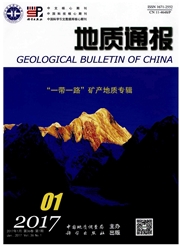

 中文摘要:
中文摘要:
青藏高原是中国钾盐的重要产地,钾盐矿产主要分布在柴达木盆地和羌塘高原内陆湖盆区,从北到南盐湖水化学类型具有明显的分带,柴达木盆地区盐湖水化学类型为硫酸镁-氯化物型,钾盐矿产具有成盐多期性,以卤水钾盐为主,固液并存;羌塘高原内陆湖盆区盐湖水化学类型为碳酸盐-硫酸盐型,钾盐主要存在于卤水中。在综合分析青藏高原钾盐矿产时空分布的基础上,进一步分析青藏高原钾盐矿产成矿的控制因素有成矿物质来源、构造地貌及气候,其中成矿物质主要来源于地层和深部水的补给,构造地貌决定物质的搬运富集,气候决定矿产的形成和保存。
 英文摘要:
英文摘要:
The Tibetan Plateau is an important producing area of potash salt deposits, which are mainly distributed in Qaidam Basin and Qiangtang Plateau inland lake basin. The water chemical types of the salt lake show obvious zoning from north to south. In Qaidam Basin, water chemistry has evolved into magnesium sulfate- chloride type, and the potash salt resources were formed in varied periods, with brine potash salt accounting for the main part, characterized by the coexistence of solid and liquid. In Qiangtang Plateau inland lake basin, water chemistry is of carbonate-sulfate type, and the potash salt mainly exists in brine. Based on a comprehensive analysis of spatial-temporal distribution, the authors performed a further analysis of the ore-controlling factors such as the source of ore-foming materials, tectonic geomorphology and climate. It is shown that the ore-forming materials were mainly obtained form strata and deep water supply, the tectonic geomorphology determined the transportation and enrichment of the materials, and the cli- mate severely impacted the formation and preservation of potash salt resources.
 同期刊论文项目
同期刊论文项目
 同项目期刊论文
同项目期刊论文
 期刊信息
期刊信息
